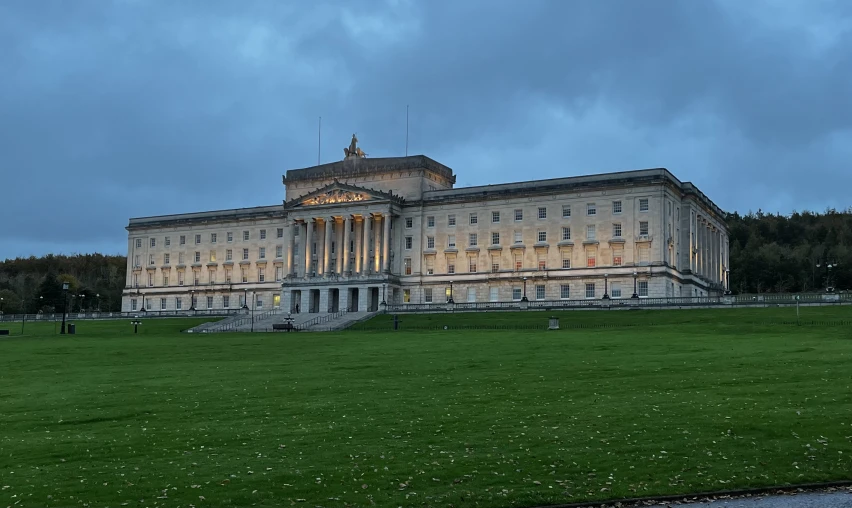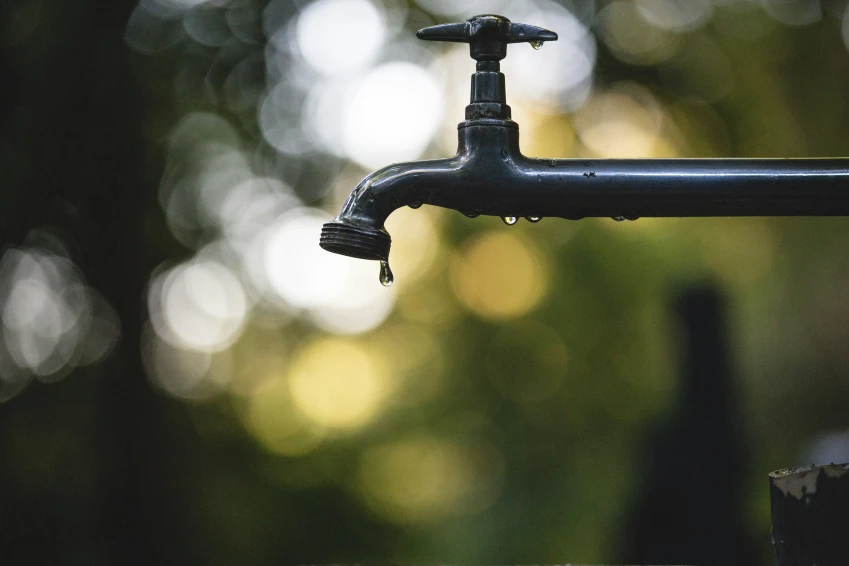
Pivotal responds to new reports from the NI Fiscal Council and Grant Thornton and Turley.
Two new reports detail why policymakers, and everyone with a stake in the economic and social development of Northern Ireland, need to grasp the nettle of the crisis in funding water and sewage services.
A report from the Northern Ireland Fiscal Council (NIFC) sets out the stark need for additional revenue to support this key infrastructure. This has been closely followed by a report commissioned by NI Chamber, the Construction Employers Federation (CEF) and the Northern Ireland Federation of Housing Associations (NIFHA). Written by Grant Thornton and Turley, this report argues that the situation constitutes an urgent crisis and proposes practical options that address the need to raise additional revenue.
The NIFC gives expert independent assessment of Northern Ireland’s public finances. The new report, ‘Sustainability Report 2025: special focus – Water’, details the history and development of NI Water, its unique structure and funding model, finances, regulatory framework, and obligations. The report then assesses if NI Water has sufficient resources to meet its obligations. Concluding that its revenue is insufficient, the report presents a summary of available options for raising greater investment. With a focus on assessing sustainability, making policy recommendations is outside of the NIFC’s remit.
When read alongside the budgetary implications for Northern Ireland from the recent Spending Review by Chancellor Rachel Reeves, the NIFC report offers clarity regarding the underfunding of NI Water and the difficult choices needed from our elected representatives to ensure sufficient finance to sustain essential water and wastewater services. The Spending Review increases NI’s block grant - 0.4% for resource spending and 0.7% for capital spending per year for three years - but these relatively small increases leave the NI Executive with many tough spending choices, not least about how to address the crisis in our water infrastructure.
The 2025-26 Executive budget contained a £188 million shortfall for NI Water. The Fiscal Council report highlights that NI Water calculates it will take 18 years of above-average real terms investment to manage the current infrastructure backlog. The work of Grant Thornton and Turley calculates a “cumulative capital funding gap” of £2.03 billion for the upcoming 2027–2033 period. They also assess the impact of inaction on current and future housebuilding, constraints on jobs in the construction sector, and wider economic investment. With housebuilding at its lowest level since the years following the Second World War, the report asserts that by 2027, 6,150 further homes will not have been built due to a lack of wastewater capacity. The report states that: “Limitations in capacity have already resulted in an effective halt of all new construction in 23 towns across Northern Ireland.”
A Fiscal Council focus on revenue required, not structures
The NIFC report concludes that reforming the structure of NI Water – whether through mutualisation, privatisation, or other reforms to its public sector status and borrowing powers - would not negate the need for raising additional revenue. The report states this starkly: “The fundamental constraint on NI Water is a budgetary one.”
Debates regarding the potential benefits of mutualisation, or other structural reforms to NI Water, merit further analysis, and in the opinion of Pivotal should not be dismissed. One method to keep increases to ratepayers’ bills as low as possible would be for NI Water to gain new borrowing powers, and this would require a change of ownership model. Privatisation has limited support, especially given the failings within the English system. The work of Grant Thornton and Turley suggests NI Water changing from its current position as a Government-owned company to become a Public Corporation – similar to Translink and in line with how Scottish Water is governed.
Such a radical reform to the governance of water services would increase the need to address revenue streams – it is not a route to avoiding questions of revenue. There is a risk at present that conversations about structural change become a distraction from the more fundamental issue that whatever the ownership of water services in Northern Ireland a significant increase in revenue will be required. For the Treasury to accept such a change in status they would need reassurance of the viability of the new model, and that sustainable revenue streams are in place to support a new freedom to borrow.
Unappealing but necessary decisions
One of the proposals from the Grant Thornton and Turley report is that the “NI Executive should as part of ongoing efforts to increase our fiscal floor, push for the ability for NI to access an ‘Infrastructure Transformation Fund’.” This proposed Fund would see UK Government commitments to fund infrastructure through the National Wealth Fund and Infrastructure Bank extend to support wastewater in Northern Ireland.
The authors acknowledge that the “UKG would only consider such an arrangement as part of a wider agreement, with the NI Executive playing its part.” Therefore, even if this approach to the Treasury was successful, significant new and sustainable revenue emerging from within Northern Ireland would be needed - from either the Executive’s existing budget, higher ratepayers’ bills, or water charges on consumers. None of these are attractive options for politicians who are committed to keeping costs to households as low as possible.
A frequently heard response to calls for additional funding is the argument that through rates households already pay for their water. But, as was noted in the 2007 Independent Water Review, the link between the Regional Rate and funding water has been broken for decades. This broken link has resulted in an increasing direct subsidy to NI Water from the block grant. The NIFC report notes that the “DfI estimates that domestic water charging would have freed up around £300 million of its resource and capital spending envelope in 2022-23.” This is £300 million that could have supported other greatly needed public investments.
Many households under strain will, understandably, not be in favour of any increase in their bills, but the NIFC detail the degree to which ratepayers in Northern Ireland have significantly lower bills than the rest of the UK. As Table 1 below spells out, this is perhaps most notable in comparison with Scotland, a devolved nation with many similar economic indicators and public policy challenges. The combined annual Council Tax and Water bill for a Scottish household is £1,916, compared with £1,239 in NI.
Table 1: NI domestic rates and GB Council Tax bills, 2024-25. Taken from the NIFC Sustainability Report 2025 – special focus water

This disparity is only going to increase, as highlighted by recent water bill increases in Scotland, and for England and Wales.
The NIFC report that the regulator calculates the value of notional water charges lost to the system equates to average household bills of £590. This notional water bill would place strain on many households, but the NIFC notes that even in this scenario “the average combined bill for water charges and rates would probably still be lower in NI than the average bill on a per dwelling basis for water charges and Council Tax in other parts of the UK”. Grant Thornton and Turley calculate that if the “full burden” of paying for water was met by households then rates bills would double, with increases of £625. They discount this as “an extreme scenario”.
Smaller, more politically viable, increases to household bills could be part of a broader mix of revenue to plug the gap. This is the approach Grant Thornton and Turley recommend. They rule out separate new water charges as politically unfeasible, instead putting forward options for “re-establishing the explicit link between rates and water.” To do so, they propose a “Hypothecated Infrastructure Levy” component to be added to rates bills. The report then calculates what this levy would amount to, depending on: the length of the next regulatory period, whether NI Water gains borrowing powers, and whether non-domestic water users will be asked to pay more on top of their existing water bills.
These options produce an additional burden on domestic ratepayers that ranges from £96 - £398 per annum. The lower end of these averages would clearly be the more attractive option but would be dependent on NI Water’s status changing to facilitate borrowing powers, and would also place a significant additional burden on businesses, through £290 added to the average annual non-domestic water bill. Within a UK context, an additional £100 - £200 for households onto the average rates bill would not be hugely out of line with the average increases in water charges seen recently across Great Britain.
Other revenue raising options are also considered by Grant Thornton and Turley, including voluntary and/or compulsory developer contributions. This proposal was recently put out for consultation by the Department for Infrastructure. While developer contributions would provide additional revenue, the Department’s consultation itself acknowledged: “neither option for introducing developer contributions will result in the level of funding that is required to address the historical underfunding of wastewater infrastructure investment in Northern Ireland.”
Developer contributions, and potentially a hybrid model of voluntary and compulsory levies, may offer a partial solution, and may kick start some developments. However, the consultation lacks detail on the potential costs of the levies for developers, how they will be calculated, and how and where the acquired revenue will be spent. The concerns of many within the sector about the impact of developer contributions on some housebuilders and the housing market need to be addressed, with detailed proposals and further consultation. There is also a fairness question – the cost of these proposed levies would, in large part, be passed onto consumers, and will disproportionately hit younger people already struggling to find housing. Pivotal’s full response to the Developer Contributions consultation can be found here.
A key challenge for the Executive
The competing demands on the Executive’s budget, from health and other departments, and multiple other pressures from within the Department for Infrastructure budget, mean that significant additional Executive money for water is highly unlikely. Higher rates bills will understandably be unpopular and challenging for many households already struggling financially. In the event of significantly higher bills, protections for poorer households would be essential.
With no easy options on the table, the temptation for the Department and the Executive to stick to the status quo will be strong. This particular can has been kicked down the road many times before. Since the recommendations of the 2007 Independent Water Review were shelved, decades of strategic inaction have followed. Further delays now threaten housing developments, business investment and the long-term stability of this vital infrastructure.
These two independent reports underline how central the mission to properly fund wastewater is to the driving economic, social and environmental missions of the Executive. Together both reports, in their differing approaches, highlight the drastic impacts of continued inaction.












